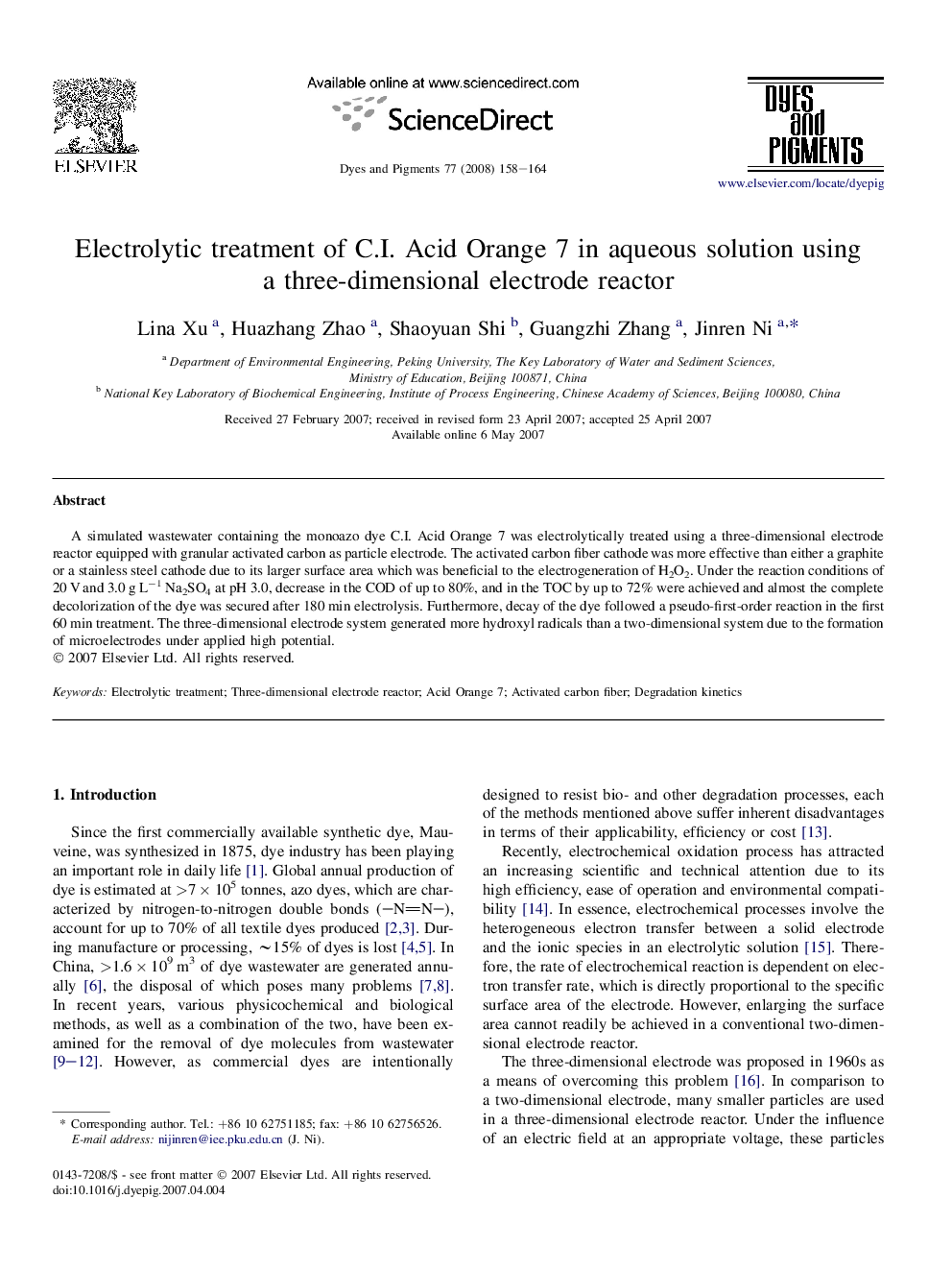| Article ID | Journal | Published Year | Pages | File Type |
|---|---|---|---|---|
| 177555 | Dyes and Pigments | 2008 | 7 Pages |
A simulated wastewater containing the monoazo dye C.I. Acid Orange 7 was electrolytically treated using a three-dimensional electrode reactor equipped with granular activated carbon as particle electrode. The activated carbon fiber cathode was more effective than either a graphite or a stainless steel cathode due to its larger surface area which was beneficial to the electrogeneration of H2O2. Under the reaction conditions of 20 V and 3.0 g L−1 Na2SO4 at pH 3.0, decrease in the COD of up to 80%, and in the TOC by up to 72% were achieved and almost the complete decolorization of the dye was secured after 180 min electrolysis. Furthermore, decay of the dye followed a pseudo-first-order reaction in the first 60 min treatment. The three-dimensional electrode system generated more hydroxyl radicals than a two-dimensional system due to the formation of microelectrodes under applied high potential.
